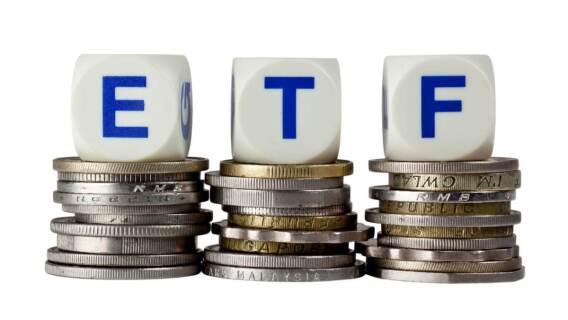First pioneered by the American Stock Exchange in 1993, exchange-traded funds (ETFs) have seen their numbers soar in the past few years. In fact, there are more than 4,100 ETFs traded in the U.S.—in just about every investment category you can imagine—and as of just a few months ago, the number of ETFs available now exceeds the number of individual stocks in the U.S.
As the ETF marketplace has grown, funds looking to differentiate themselves from the competition have focused on low-cost offerings.
Fund companies created ETFs as an alternative to mutual funds, and ETF fans believe they hold distinct advantages over mutual funds.
The Advantages of ETFs over Mutual Funds
· Expenses are significantly less than most mutual funds. For example, according to http://www.etfdb.com, the least expensive ETF is the BNY Mellon US Large Cap Core Equity ETF (BKLC), with an expense ratio of 0.00%. That’s right, this is the first fund to launch with zero total operating expenses. The average ETF expense ratio is typically around 0.45-0.5%, compared to 0.78% for mutual funds, although operating expenses do vary by sector and management activity, with broad-based, low-cost index funds typically being least expensive, including multiple offerings in the low single digits. Keep in mind that trading ETFs does require a broker, which will result in a commission in addition to the fund expenses. However, the total expenses for a long-term investor are on average much lower than the expenses of mutual funds investing in similar asset categories.
· Liquidity and transparency. ETFs can be traded all day long, instead of just once daily for mutual funds. With mutual funds, you buy your shares at the end of the trading day, at the published net asset value (NAV). ETFs are continuously priced throughout the day, so you buy and sell them just like stocks. That means you can get in and out of the ETF market at your convenience—not the fund’s. And, unlike mutual funds, with ETFs, you can use stop and limit orders, you can sell them short, and you can trade options.
[text_ad]
· Lower capital gains distributions. Investment turnover in ETFs is not as frequent as in mutual funds, leading to lower capital gain distributions; hence, a smaller tax bite for most investors. Additionally, many mutual funds are forced to sell shares when they incur high demand for redemptions (as the fund holders are selling their shares back to the mutual fund company), triggering tax consequences. With ETFs, there is a buyer for every seller, so the ETF itself is, most likely, not going to rack up huge tax bills that may come back to haunt you at the end of the year. But ETFs are far from perfect; like other investments that trade throughout the day, ETFs are subject to the order flow of the market and things like circuit breakers or trading halts in days of extreme volatility, or wider price swings if you’re trading ETFs with low volumes.
· No minimum investment for ETFs. Most mutual funds (unless they’re in a retirement plan) will require a significant or recurring investment to start, whereas your entry point for ETFs is only the share price, and with the rise of fractional share trading, even that bar has been lowered.
The U.S. Is the ETF Leader
As I said, ETFs are not perfect, but they continue to garner plenty of investor interest, and as of September 2025, represent over $12.7 trillion in assets across a wide variety of sectors and strategies. Investors can find ETFs that are market-, dividend-, earnings- and sales-weighted. You also have your choice of commodity, country, and sector exchange-traded funds.
Actively-managed ETFs are growing in popularity, and short and leveraged ETFs are increasingly giving average investors access to strategies they may not have had in the past.
There are, however, certain structural differences with leveraged and short/leveraged ETFs that can introduce unexpected risks for intermediate- to long-term investors, so be sure to review individual fund disclosures.
Evaluating ETFs
The two factors crucial to analyzing ETFs are performance and expenses. When dealing with low-cost, broad-based index funds, your ETF’s performance should broadly mirror that of the underlying index.
Performance. Remember that with so many different funds, in a variety of sectors, implementing an assortment of strategies, it’s important to compare apples to apples. If you’re diversifying your portfolio or are looking for sector-specific exposure, compare the performance and expenses of funds that broadly share the same investing criteria. That will help ensure that you don’t inadvertently undermine your strategy simply by picking a better-performing ETF that doesn’t actually meet your needs.
Expenses. While ETFs are generally a low-cost alternative to mutual funds, it’s still important to compare overall cost and performance between competing investments, especially when you’re interested in investing in actively managed funds (of either variety). With actively managed funds, you are, to some degree, paying for the knowledge and experience of fund managers. Although returns are never guaranteed, there are funds where superior performance offsets a higher expense ratio.
You can find additional information on the following websites to help you with your ETF research:
http://www.etfscreen.com/i-screener.php
Three Closing Thoughts
- The ETFs you choose should be part of a broader strategy involving calculated risk and a balanced portfolio.
- When comparing ETFs to mutual funds (or to each other) make sure you’re comparing funds with the same active or passive management strategy designed to give you exposure to the same sector or asset category.
- There is a wide variety of educational resources available for investors interested in building a low-cost portfolio, and Cabot Money Club
is a great place to start.
[author_ad]
*This post has been updated from a previously published version.

